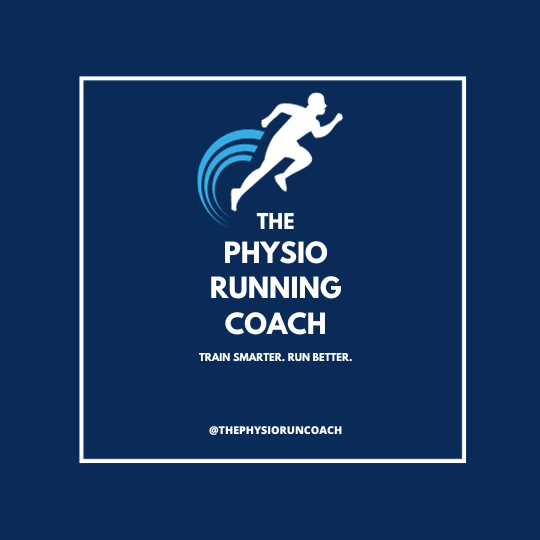How to Stop the Niggle Becoming a Nightmare

November 11, 2023

Running is tough. It can provoke physical, emotional, and psychological pain. The latter two are often seen as a positive thing, making us more resilient, and achieving things our minds thought were impossible. But as a society, we are conditioned to believe that all physical pain is bad. Our models of healthcare and health promotion are designed around this. In pain? Take this medication. Or see this person for a magic manipulation. Or do this exercise from Instagram to “fix your pain.” When pain doesn’t go away instantly we panic, we stop our exercise hobbies, we rest, we decondition, we get low in mood. This cycle is everywhere. And it is very obvious in the ‘running related injury’.
Pain aggravated by running, which started without a specific cause, will almost always be an overload related injury. Plantar fasciitis, shin splints, runners’ knee, hamstring tendinopathy, hip bursitis. All overload. Too much too soon. Or too hard too soon. As a physiotherapist who treats runners every day, these are the bread-and-butter injuries. They can also be very easy to get right if we understand our training volume and intensities, and more importantly understand what our bodies can handle at that very moment.
The first step in dealing with a running related injury is to ensure it is a niggle, not a nightmare. Serious injuries, such as stress fractures, can happen. These are not niggles and unfortunately will lead to an extended break from running. Seeking the advice of a knowledgeable healthcare professional should help to exclude these more serious issues. Once that happens, you should be given a plan which focuses on keeping you running if possible, while rehabilitating the issue at the same time. This should be possible in most cases. If your physiotherapist puts a blanket ban on running, without very good reason, then you should seek a second opinion.
But what you can you before even seeking help?
Lots of aches and pains can be self-managed without the need for healthcare involvement. You need to relate your symptoms to your current lifestyle and activity levels. Take a training block for a running distance which you have never completed before. This could be anywhere from 5k to marathon or beyond. As the training builds up, the running volume increases beyond what your muscles and joints have ever been exposed to. Or you have added some faster pace workouts than your previous training block. Either of these changes can bring pain. This pain does not usually equal injury. It is a response to the increased load, and possibly some biomechanical changes that occurred during the run due to fatigue or working at a different speed than you are used to.
There are two key principles, albeit both very subjective so can vary in accuracy, to bear in mind when determining whether you have a niggle or a nightmare. The first is the pain intensity, measured on a 0-10 scale. If you rate the pain at 0-3, no problem. Pain rated at 4 or above may be something more significant. This isn’t a black and white line, so once we get to 6+ then we should definitely exercise caution. The second factor is how long it takes for symptoms to return to their baseline. Less than 24 hours is the aim. You need to use these principles together to calculate the risk. For example, a severe pain in the knee at the end of your run which you rate at 8/10 would seem to be a problem. But if it disappears six hours later, then it may not be a big issue at all. Your next run should still be a shorter easier effort as a test. If pain is fully gone when your next run is scheduled, then go for the run, don’t fear the niggle. The likelihood is it wont be as bad, or may be completely gone. If it returns, especially if it occurs earlier or more severely, then it is time to stop and seek help. Conversely, a 2/10 discomfort in the foot which is always present and never fully settles down after a run may be more of a concern. The ‘holy grail’ of niggles, if there is one, is a 1-3/10 pain which fully resolves within 24 hours. It may reoccur again at the next run, but if the pain scale and resolution time continue to be within the above parameters, then carry on. The only caveat here is that over the course of one to two weeks you should be seeing some improvement. It is not sensible to run for long periods with a pain that is not improving.
Working with an experienced physiotherapist can help when you cannot get on top of these niggles by yourself. Some rehabilitation of muscles or tendons may be required depending on the issue. But the most important thing is how we can keep you running. What variables can we change? Simply by manipulating the duration, intensity, or frequency of your training we can often keep you running without making anything worse and suffering the deconditioning that comes from a complete rest period. Other more subtle factors can also be addressed, such as cadence (number of steps per minute), route elevation, footwear types etc. Changing these can help redistribute forces from one area of the lower limb to another, hence offloading the painful site.
The key message here is that pain does not always equal injury. Running can be painful, but this does not mean that it SHOULD be painful. We need to understand the pain pattern – where it is coming from, what brings it on, how severe it is, and how long it lasts. Once this is established, running of some sort can almost always continue. The chances of having these issues in the first place is also greatly reduced by ensuring that the training volume and intensity is within your current capabilities. So, to run consistently and safely;
Do the training that is appropriate for you, not the training you aspire to
Don’t fear the niggle, but prevent the nightmare
Always seek the guidance of a qualified healthcare professional if you are concerned by a running related injury.
If you enjoyed this article and wish to work with Enda for 1:1 running coaching, you can find out more information by clicking HERE.




